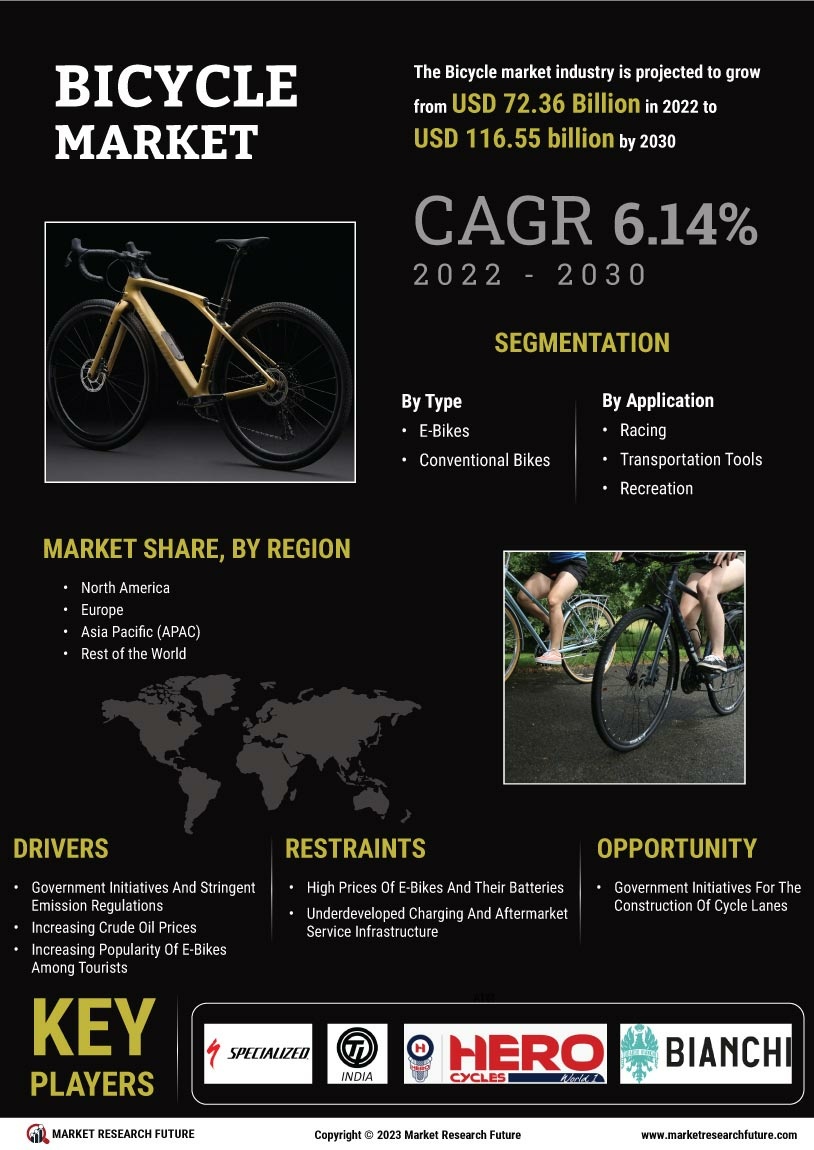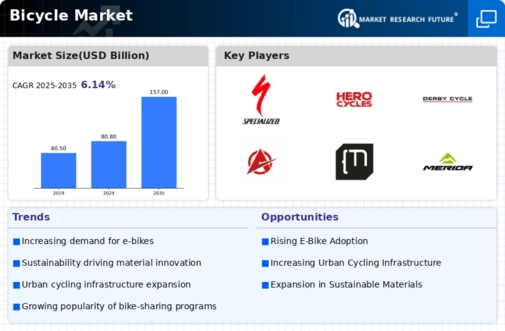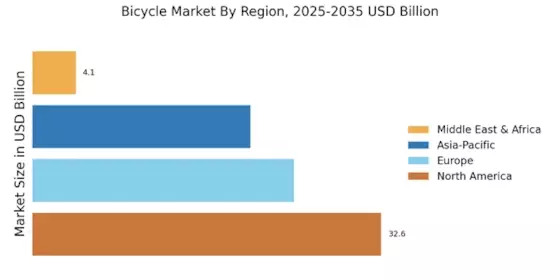The Bicycle is currently characterized by a dynamic competitive landscape, driven by a confluence of innovation, sustainability, and shifting consumer preferences. Major players such as Trek Bicycle Corporation (US), Giant Manufacturing Co. Ltd. (TW), and Specialized Bicycle Components (US) are at the forefront, each adopting distinct strategies to enhance their market positioning. Trek Bicycle Corporation (US) emphasizes innovation through the development of electric bicycles, while Giant Manufacturing Co. Ltd. (TW) focuses on expanding its global footprint, particularly in emerging markets. Specialized Bicycle Components (US) appears to prioritize sustainability, integrating eco-friendly materials into their product lines, which collectively shapes a competitive environment that is increasingly focused on technological advancement and environmental responsibility.
In terms of business tactics, companies are localizing manufacturing to mitigate supply chain disruptions and optimize logistics. The market structure is moderately fragmented, with a blend of established brands and emerging players vying for market share. This fragmentation allows for diverse consumer choices but also intensifies competition among key players, who are compelled to innovate continuously to maintain relevance.
In August 2025, Trek Bicycle Corporation (US) launched a new line of electric mountain bikes, which is anticipated to capture a growing segment of environmentally conscious consumers seeking adventure. This strategic move not only aligns with current trends towards electrification but also positions Trek as a leader in the high-performance e-bike segment, potentially increasing its market share in a competitive landscape.
In September 2025, Giant Manufacturing Co. Ltd. (TW) announced a partnership with a leading tech firm to develop smart cycling solutions, integrating AI and IoT technologies into their bicycles. This collaboration is likely to enhance user experience and safety, reflecting a broader trend towards digitalization in the cycling industry. By leveraging technology, Giant aims to differentiate its offerings and appeal to tech-savvy consumers.
In July 2025, Specialized Bicycle Components (US) unveiled a new initiative focused on sustainability, committing to a 50% reduction in carbon emissions across its supply chain by 2030. This initiative not only underscores the company's commitment to environmental stewardship but also positions it favorably among consumers increasingly concerned with sustainability. Such strategic actions may enhance brand loyalty and attract a demographic that prioritizes eco-friendly practices.
As of October 2025, the Bicycle Market is witnessing significant trends such as digitalization, sustainability, and the integration of advanced technologies like AI. Strategic alliances are becoming increasingly pivotal, enabling companies to pool resources and expertise to innovate more effectively. Looking ahead, competitive differentiation is likely to evolve from traditional price-based competition towards a focus on innovation, technological integration, and supply chain reliability, as companies strive to meet the demands of a more discerning consumer base.
In September 2025, reports showed a 17% decline in Chinese bicycle imports into the U.S. due to new tariff impacts. The drop reflects tightening trade conditions and growing pressure on low-cost manufacturers. Industry analysts expect continued market shifts as tariff regulations intensify.
In September 2025, Bike‑Europe launched the Global Bicycle Purchasing Index in partnership with Eurobike, offering insights into global bike demand, purchasing trends, and market dynamics. The index is expected to assist manufacturers, dealers, and investors in strategic planning. It reflects rising interest in global bicycle market analytics post-pandemic.


















Leave a Comment